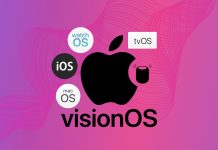
Apple giveth, Apple taketh away. That’s the reality when you play in someone else’s sandbox. During the WWDC keynote earlier today, you could almost hear the jaws drop as minute by minute Apple drove a knife through the backs of various third-party apps.
Dropbox, meet iCloud Drive.
Snapchat, say hello to the new iMessages.
Alfred, tip your hat to Spotlight in Yosemite.
The dominos just kept falling as Apple claimed the functionality of multiple iOS and OSX third-party apps as its own. And do you know what? I loved every minute of it. Don’t get me wrong, I love third-party developers, they make some amazing experiences possible with a level of detail that Apple could never copy, but when it comes to the overall user experience, an integrated, native solution, even with only 80 percent of the functionality, beats anything in the App Store for the vast majority of users.
In almost every other aspect of the world of products, having something built-in is the standard. The entire concept of having an ecosystem surrounding a device that enhances its functionality is a very tech-specific thing. Sure you can get mud flaps for your F–150 or a wall mount for your TV, but the idea of adding completely new functionality to a product is not something consumers are used to getting from anyone other than the manufacturer.
Benedict Evans had a great tweet during the keynote that really sums up my thoughts:
Apple showing the death of ‘I’m not compute literate’
— Benedict Evans (@BenedictEvans) June 2, 2014
The idea that people should have to know what apps are new and hot, and be jumping in and out of multiple UIs and experiences just to get things done is a concept that is foreign to almost any other consumer product experience. The entire value of a platform like iOS, and the promise made by Steve Jobs during the original iPhone unveiling, was that a device could seamlessly be one thing and another at the same time without complication, without compromise.
Apps were the beginning, and they’ll always be a part of pushing the boundaries further, but short of things like games and social networks, people should not only expect, but anticipate Apple absorbing the functionality demonstrated by successful third parties into its core platform.
Is it copying? Is it stealing? Who cares. Steve Jobs was fond of paraphrasing Picasso’s “Good artists copy; great artists steal” mantra. Lets’ be honest, without Apple a massive multi-billion dollar industry for app developers doesn’t even exists. This is their playground, they built it and the price of entry — aside from $99 and a 30 percent cut — is the understanding that your position in this ecosystem is never guaranteed.
Third-party developers are undoubtedly the soul of the iOS platform, but the beating heart is iOS and whatever Apple needs to do to enhance its functionality for average users benefits the ecosystem at large. If providing a platform for creative development within Apple’s ecosystem meant declaring every idea produced by it off-limits, well, then the App Store as we know it wouldn’t exist. There would be no opportunity for anyone.
For every app category usurped by Apple today, 100 more were created with the introduction of new APIs, development kits and a brand new coding language that will make it easier than every before to create the next great app. That’s the promise Apple makes: we’ll give you access to our platform, our hundreds of millions of customers, our simple payment system and dozens of tools to make any app you can dream of, but we reserve the right to move into your territory at will, without notice. Apple’s goal is to grow iOS and OSX platforms and to bring in more users than ever before. In doing so they occasionally have to step on a few toes, but they do it with the goal of creating more opportunity for everyone.
Any apps that gets “screwed” by Apple will still have the opportunity to thrive by providing a better user experience, additional features or building a thriving community. There are hundreds of apps that not only survived, but thrived when Apple moved into their territory due to the added attention it brought to their respective categories and their ability to provide a better, more focused experience. However, when it comes to the core iOS and OSX experience, Apple has the interests of the 95 percent of users that don’t watch the livestream of WWDC in mind. Simplicity, integration and security are the goals of any Apple experience, which still leaves plenty of room for developers to innovate on the edges of the experience for an audience that craves more detail and functionality.
The post-WWDC chatter usually focuses on the graveyard of apps that Apple left in its wake, but, as usual, the company has provided developers with even more opportunity on the best mobile and desktop platforms on the planet. It’s a great time to be a developer in the Apple ecosystem, just don’t get too comfortable and be prepared to embrace a new direction at any time.






